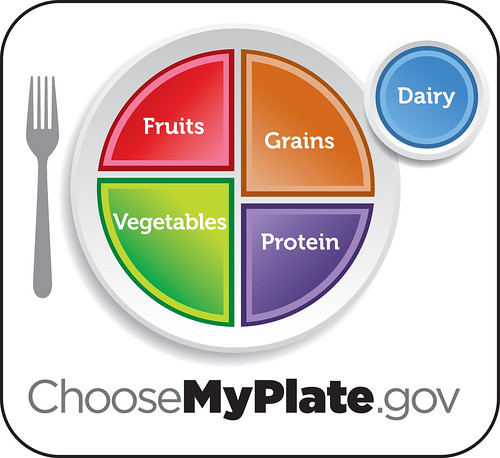
Recent news articles have reported that a healthy diet is expensive if one were to consume the recommended amount of fruits and vegetables. As the senior economist with the USDA Center for Nutrition Policy and Promotion (CNPP) with over 20 years of experience in the area of food economics developing food plans and market baskets, I agree. Depending on the food choices, a healthy diet can be relatively expensive.
However, there is a compelling fact that these news reports fail to highlight -- a healthy diet can be relatively inexpensive. Now some readers of this blog may think that this is another case of economic double talk or spin, but healthy foods come in a variety of forms and a range of prices that likely fit just about anyone’s budget.
To help consumers choose a diet that conforms to the 2010 Dietary Guidelines for Americans, CNPP recently introduced a 7-day menu plan to help consumers improve their diet; you can find it at ChooseMyPlate.gov. Averaged over a week, this menu provides food choices that meet the recommended amounts of key nutrients. Based on national average food costs, adjusted to 2011 prices, the cost of this menu is less than the average amount spent for food, per person, for a 4-person family. For example, the average food cost for a 2,000 calorie diet is $6.65 per person per day.
According to a USDA study, the total costs for satisfying the USDA food pattern quantity and variety recommendations for fruits and vegetables in the Dietary Guidelines vary from day-to-day, but average just under $2.00 per day or, approximately, 40 to 50 cents per cup-equivalent, using 2008 prices for commonly consumed fruits and vegetables.
Many of the most commonly consumed fruits and vegetables - such as apples, bananas, navel oranges, fresh whole carrots, onions, and potatoes -- cost less than 40 cents per cup-equivalent. A recent Produce Marketing Association report “The Cost of the Recommended Daily Servings of Fresh Produce” shows people can meet vegetable and fruit recommendations for about 50 cents per cup. The average price per cup-equivalent across all fresh produce is 42 cents for vegetables and 56 cents for fruits (based on 2009-10 data). Nationally, the average retail price for fresh vegetables and fruits recommended for a 2000 calorie diet (4.5 cup equivalents) is $2.18.
In the total U.S., the least expensive fresh vegetables were potatoes, lettuce, eggplant, greens, summer squash, carrots, and tomatillos. The least expensive fresh fruits were watermelon, bananas, apples, pears, pineapple, and peaches. According to a USDA study, opting for frozen or canned vegetables and fruits may also lower costs.
These studies show it is possible to eat a healthy low-cost diet or one that costs less than what people are presently spending. In fact, some of the studies showing that a healthy diet is expensive, also admit in their discussion section that a healthy diet can be inexpensive, depending on the food choices a person makes. This is the key - choosing healthy, low-cost foods.
For guidance, USDA has a website that helps people make these choices. It’s called The Recipe Finder Database. The site contains numerous recipes that are low cost and follow dietary recommendations. Weekly household menus can be built from these recipes.
In addition to selecting healthy, low-cost foods, I find that people need to build good shopping skills. These skills include doing comparison pricing, using coupons, buying fruits and vegetables in season, and storing produce bought in bulk in a way that preserves them safely for use over a longer period of time.
Of course, the selection of healthy foods, whether they be the higher or lower cost options, depends on people having access to such foods. This is an area of concern and one that USDA continues to address. In addition, many people in the United States have no income or fall below the poverty threshold. The Supplemental Nutrition Assistance Program (SNAP, formerly Food Stamps) provides these people with the means to choose low-cost healthy foods.
To learn more about healthy eating, go to www.chooseMyPlate.gov.
